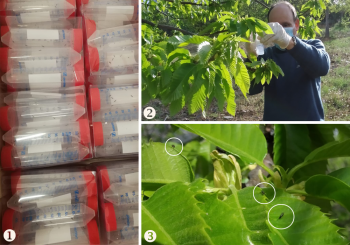Regulation of chestnut blight by hypovirulent strains
A method is resented to reduce the severity of cankers caused by chestnut blight, Cryphonectria parasitica. This pathogenic fungus penetrates and necroses cortical tissues, which provoke mortality of adult trees aerial parts and failure of grafting.
In the 1970s, French researchers developed a biological control method using hypovirulent strains of the fungus. Since then, a research programme at INRA conducted with several organisations (Chambers of Agriculture, Union of Chestnut production Associations, the Forest Health Department) aims at clarifying and improving...



